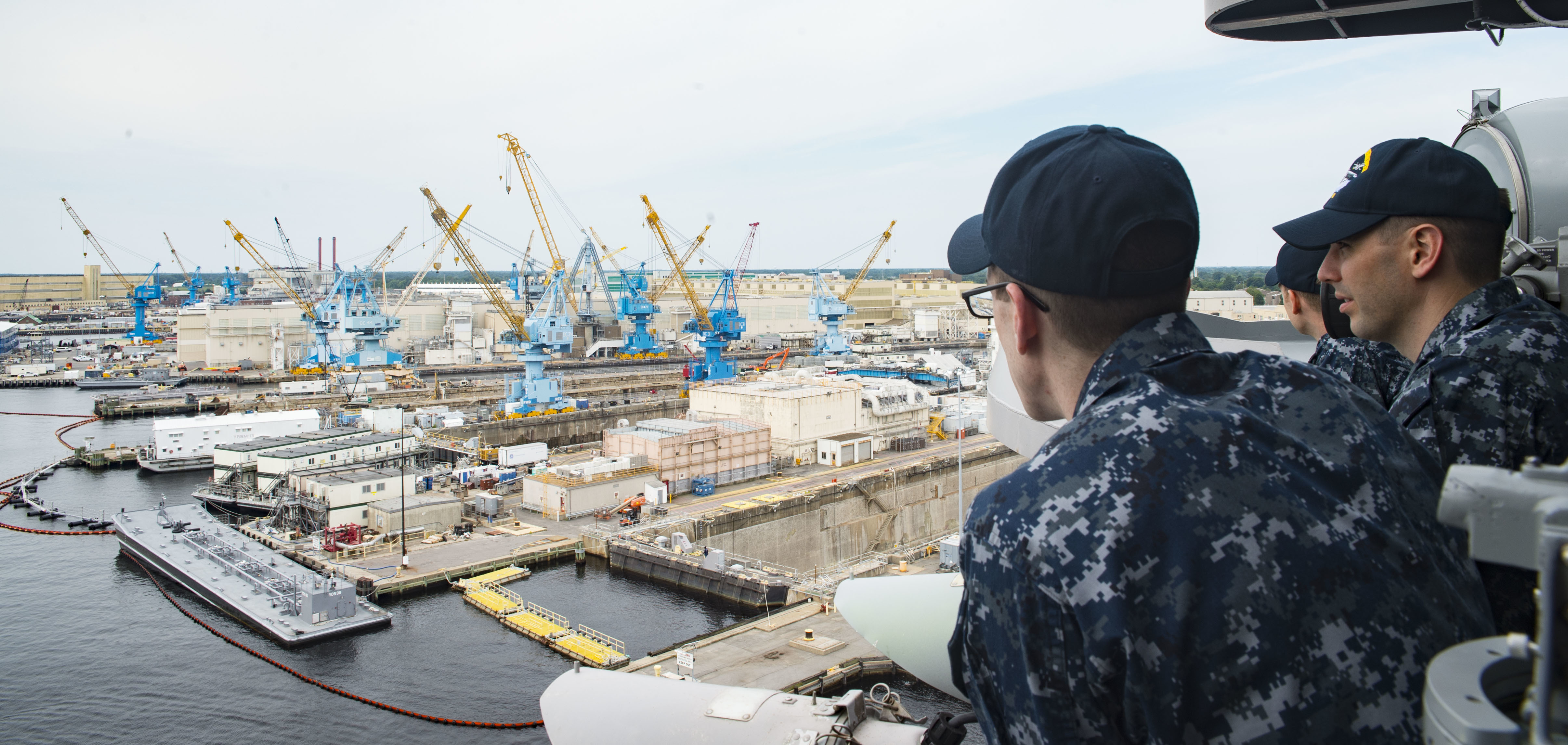
The Government Accountability Office recommended the Navy revisit its plans to improve and modernize its four public shipyards – something the service is already in the midst of – after finding that the yards’ overall condition remains poor and the timeline and cost to achieve the Navy’s full list of needed improvements continue to grow.
According to the GAO report, released today, “Navy data show that the cost of backlogged restoration and maintenance projects at the shipyards has grown by 41 percent over five years, to a Navy-estimated $4.86 billion, and will take at least 19 years (through fiscal year 2036) to clear. Similarly, a Navy analysis shows that the average age of shipyard capital equipment now exceeds its expected useful life.” The Navy previously predicted it could work through the backlog of capital improvement and military construction projects by 2030, six years sooner than current estimates.
Navy officials have not been shy about talking about these very problems. In June, Naval Sea Systems Command commander Vice Adm. Tom Moore said the Navy would have to undertake the multibillion-dollar yard upgrade effort in a timely manner, to accommodate new ship classes and a larger fleet. He said the service would have to spend $3 to $4 billion in the next 30 years to replace the Navy’s drydocks alone, on top of all the other repairs and upgrades the four shipyards need. And he noted the Navy currently replaces its capital equipment – cranes, sheet metal rollers and other large tools – every 20 to 25 years instead of the industry standard of every 15 years.
All these issues and more are mentioned in the GAO report, which claims that “partly as a result of their poor condition, the shipyards have not been fully meeting the Navy’s operational needs. In fiscal years 2000 through 2016, inadequate facilities and equipment led to maintenance delays that contributed in part to more than 1,300 lost operational days—days when ships were unavailable for operations—for aircraft carriers and 12,500 lost operational days for submarines. The Navy estimates that it will be unable to conduct 73 of 218 maintenance periods over the next 23 fiscal years due to insufficient capacity and other deficiencies.”
Among the GAO report’s other findings were that about 25 percent of the shipyard facilities across the four yards were rated in “failing” condition, with one in five of those failing facilities being dubbed “critical to accomplishing the shipyard’s repair mission;” the four yards have nearly 50 facilities – 1.2 million square feet – that are condemned, uninhabitable, or otherwise unusable, including in prime waterfront locations that could be used to create more efficient workflows at the yards; the cost of the facilities restoration and modernization backlog at the four yards grew at a rate of 41 percent from Fiscal Year 2011 to 2016, while the Navy’s overall facilities restoration and modernization backlog grew at a much slower rate of 14 percent; and while the average age of capital equipment at the yards is 22 years old, “we also observed aging equipment at all four shipyards, including submarine shaft lathes at Puget Sound that had entered service in the 1930s and a plate roller at Portsmouth that was built in the 1950s. This equipment was still being used to support maintenance on modern nuclear submarines and at times has created impediments to efficiently and effectively completing repair work, according to shipyard officials.
Several categories of work are included in the list of needed restoration and modernization projects. At the most basic level, some buildings need to be upgraded to make them inhabitable and conducive to modern processes. In other cases, the yards can be upgraded to create better efficiency or greater capacity to repair ships. And lastly, as the yards prepare to take on eventual work from the new Ford-class aircraft carriers and the Block V Virginia-class attack submarines with the Virginia Payload Module, the drydocks will need to be overhauled to allow for that work to be performed. Currently only two of the four yards can work on legacy Nimitz-class carriers – both Norfolk Naval Shipyard and Puget Sound Naval Shipyard have one drydock each that can hold a carrier – but none could work on the Ford-class due to the ship’s power grid not being compatible with the pier-side power system at the public yards, Moore previously said. Similarly, the Virginia Payload Module would make the boats too long for some drydocks – whereas 17 drydocks across the four yards could accommodate the older Los Angeles-class attack boats and 14 can handle the older Virginia-class boats, only 11 would be able to fit the Block V subs with Virginia Payload Module, according to the GAO report.

Moore said in June that NAVSEA had outlined a long-term investment plan for the four yards, with a final plan expected to be released in February 2018.
The GAO report warned that the Navy’s previous planning efforts lacked “analytically-based goals and metrics, a full identification of the shipyards’ resource needs, regular management reviews of progress, and reporting on progress to key decision makers and Congress.”
“For example, the Navy estimates that it will need at least $9.0 billion in capital investment over the next 12 fiscal years, but this estimate does not account for all expected costs, such as those for planning and modernizing the shipyards’ utility infrastructure,” the report continues.
“Unless it adopts a comprehensive, results-oriented approach to addressing its capital investment needs, the Navy risks continued deterioration of its shipyards, hindering its ability to efficiently and effectively support Navy readiness over the long term.”





